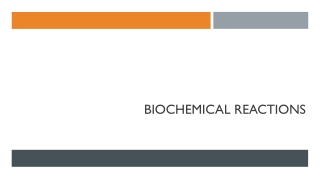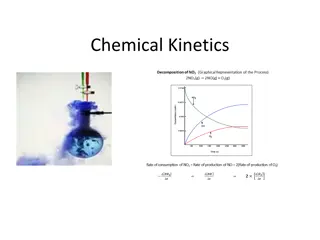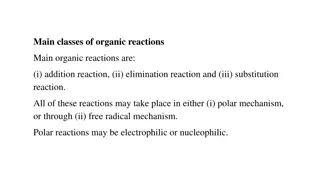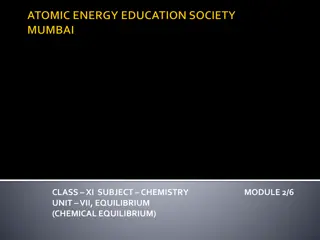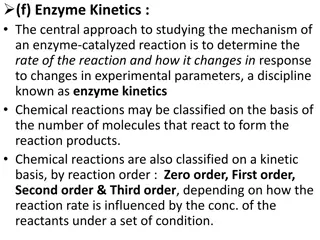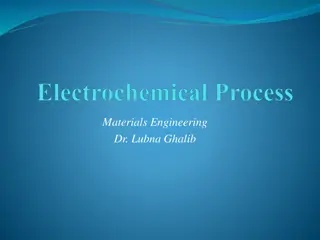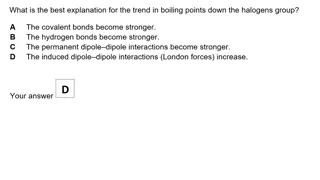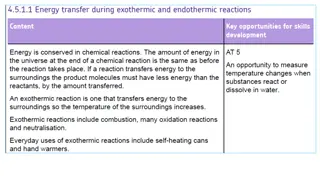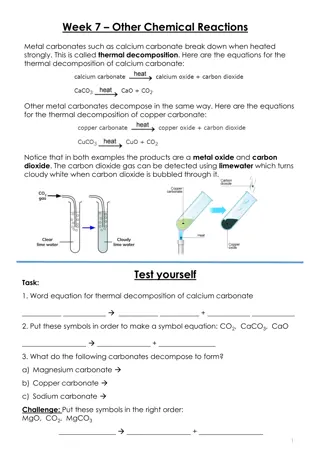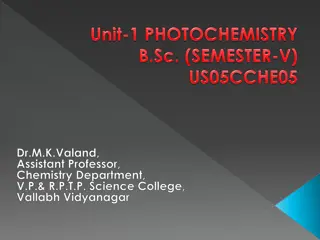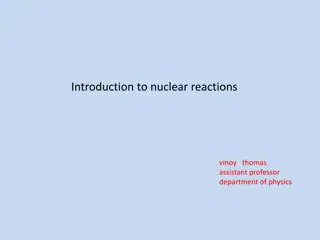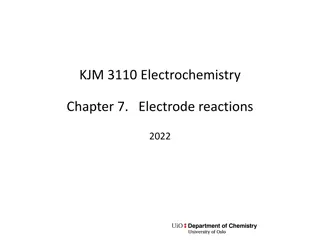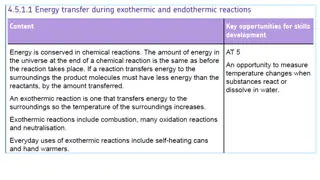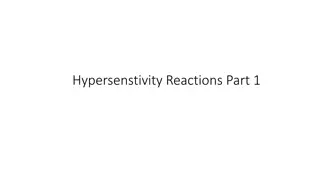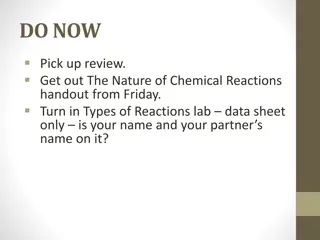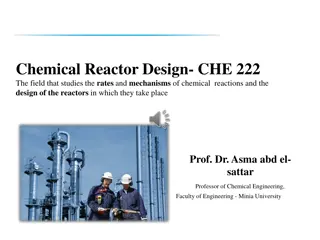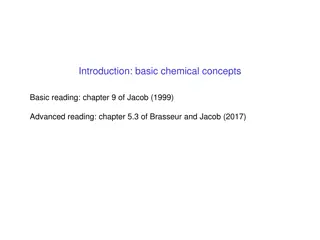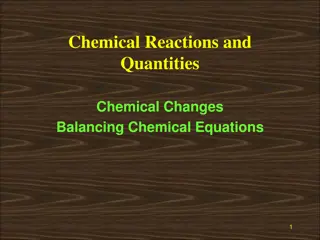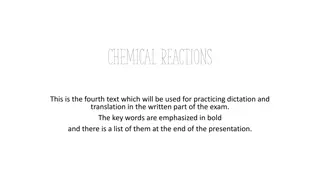Chemical Reactions and Identifications
In this scenario, various chemical reactions are explored involving the evolution of different gases, decomposition of inorganic salts, and transformation of solid compounds under specific conditions. Compounds and reactions are identified, providing insights into the dynamic nature of chemical reactions and products.
Download Presentation

Please find below an Image/Link to download the presentation.
The content on the website is provided AS IS for your information and personal use only. It may not be sold, licensed, or shared on other websites without obtaining consent from the author.If you encounter any issues during the download, it is possible that the publisher has removed the file from their server.
You are allowed to download the files provided on this website for personal or commercial use, subject to the condition that they are used lawfully. All files are the property of their respective owners.
The content on the website is provided AS IS for your information and personal use only. It may not be sold, licensed, or shared on other websites without obtaining consent from the author.
E N D
Presentation Transcript
1) When conc. H2SO4 was added to an unkNown salt presence in a test tube, a brown gas(A) was evolved. This gas intensified when copper turnings were added into test tube . On cooling gas (A) changed into colourless gas(B) a)IdentIfy the gas a & B . b)Write the equation for the reaction evolved
1 ANS the gas a Is nO2whereas B Is n2O4 XNO3+H2So4 XHSO4+HNO3 salt(conc.) Cu+4HNO3(conc.) Cu(No3)2+2NO2+2H2O bluebrown(A) 2NO2(on cooling) N2O4 colourless (B)
2. A colourless inorganic salt (A) decomposes completely at about 250 C to give only two products, (B) and (C), leaving no residue. The oxide (C) is a liquid at room temperature and neutral to moist litmus paper while the gas (B) is a neutral oxide. White phosphorus burns in excess of (B) to produce a strong white dehydrating agent. Write balanced equations for the reactions involved in the above process. Gradual addition of KI to BI(NO3)3 solution initially produces a dark brown precipitate which dissolves in excess of KI to give a clear yellow solution. Write chemical equations for the a
2 ANS 2 ANS A Colourless inorganic salt P(Phosphorus)+B dehydrating agent the reactions are explainable if A is taken to be NH4NO3 NH4NO3(s) N2O+2H2O; P4+10N2O P4O10+10N2 B + C Neutral oxide liquid strong white
3) A translucent white waxy solid A on heating in an inert atmosphere is converted in to its allotropic form (B). Allotrope A on reaction with very dilute aqueous KOH liberates a highly poisonous gas C having rotten fish smell. With excess of chlorine A forms D which hydrolysis to compound E . Identify compounds A to E ?
3 ANS 3 ANS (A)The white waxy solid (A) is white phosphorus. When white phosphorus is heated in an inert atmosphere at 573K,it changes to red phosphorus (B) is red Phosphorus (A) on heating with KOH liberates phosphine (c) which is poisonous gas with rotten fish smell. P4+3KOH+3H2O PH3+3KH2PO2 phosphine (C) White phosphorus (P4) burns with excess of Cl2 to form phosphorus pentachloride (D). P4+10Cl2 heating 4PCl5 (D) Hydrolysis of (D) gives phosphoric acid (E) PCl5+4H2O H3PO4+5HCL (E)
4. When conc. sulphuric acid was added to an unknown salt present in a test tube, a brown gas (A) was evolved. This gas intensified when copper turnings were also added into this tube. On cooling, the gas A changed into a colourless gas B . (a) Identify the gases A and B. (b) Write the equations for the reactions involved.
4 ANS A=NO2(g) B=N2O4(g) MNO3+H2SO4(heat) MHSO4+HNO3 4HNO3(heat) 4NO2+2H2O+O2 Nitrogen dioxide(Brown gas) Cu+4HNO3 (heat) Cu(NO3)2+2H2O+2NO2 copper turnings 2NO2 (Brown gas) (colourless) N2O4
5. An element A exists as a yellow solid in standard state. It forms a volatile hydride B which is a foul smelling gas and is extensively used in qualitative analysis of salts. When treated with oxygen, B forms an oxide C which is colourless, pungent smelling gas. This gas when passed through acidified KMnO4 solution, decolourizes it. C gets oxidized to another oxide D in the presence of a Heterogeneous catalyst.Identify A, B, C, D and also give the chemical equation of reaction of C with acidified KMnO4 solution and for conversion of C to D
5 ANS 5 ANS A is sulphur which exists as yellow solid in standard state. it forms B i.e., H2S(g) which is volatile hydride and is used in group II and IV in qualitative analysis of salts. 2H2S+3O2 2SO2(g)+2H2O B C (colourless and pungent smelling) 2KMnO4+5SO2+2H2O k2SO4+2MnSO4+2H2SO4 C SO2 decolourises acidified KMnO4 because it is reducing agent and KMnO4 is an oxidising agent. 2SO2(g) +O2(g) 2SO3(g) D




